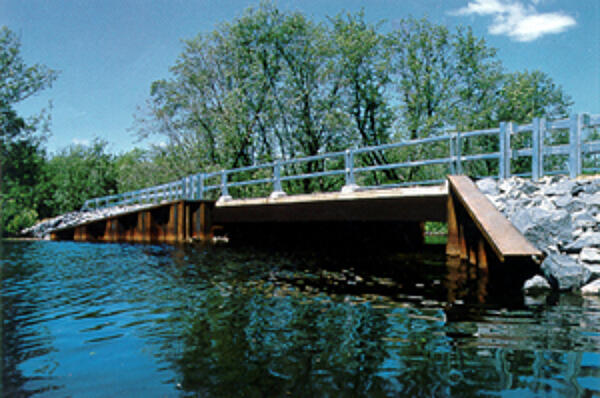Special Steels
Special steels such as stainless and weathering provide corrosion protection by taking advantage of specific chemistries and elements. Weathering and stainless steel tend to work best in narrowly defined environments or applications and each has its own limitations.
Stainless Steel

Stainless steel is an alloy steel containing iron and chromium. Because of the chromium content, usually 12-20 percent of the alloy, stainless steel has excellent resistance to stain and rust. There are more than 50 types of stainless steel identified by the microstructure. Austenitic stainless steels contain at least 6% nickel and austenite and provide good corrosion resistance and high ductility. Ferretic stainless steels have better resistance to stress corrosion than austenitic, but are more difficult to weld. The US Department of Commerce estimates approximately 1 million tons of stainless steel was produced in 2012, and about 200,000 tons of nickel-containing steel is used each year by the food processing industry in North America.
Stainless is durable for many decades in most applications, as it is incredibly passive. It is often paired with hot-dip galvanized steel in applications. However, there are a number of limitations to its widespread use, including cost, size, and difficulty in installation. Stainless steel is sold at a premium compared to coated (painted or galvanized) carbon steel, weathering steel and other building materials. Additionally, it is only readily available in certain sizes and shapes, ages with an uneven appearance, and is difficult to weld. For these reasons, its application tends to be in cases where small quantities make an Original Equipment Manufacturing (OEM) product superior to one that has no stainless or in specific sectors such as food and beverage.
Weathering Steel

Weathering steel, which contains copper, develops a natural iron-oxide (rust) patina that is stable once formed, exhibiting increased corrosion resistance compared to carbon steel. The corrosion-retarding effect of the protective layer is produced by the particular distribution and concentration of alloying elements present. The layer protecting the surface develops and regenerates continuously when subjected to the influence of the weather. In other words, the steel is allowed to rust in order to form the patina, or protective layer.
Weathering steel is often marketed as a "no-maintenance" steel to the bridge and highway market specifically. However, in the last several years, the limitations of weathering steel have stifled its use. The development of the rust patina is fragile, and requires a balanced wet-dry cycle and it does not perform well in damp areas or where vegetation comes in contact with the steel. Though the rustic look is sometimes favored by designers, the issues of rust runoff and staining of concrete bases of poles and bridge columns is unappealing and has limited the use of weathering steel.
